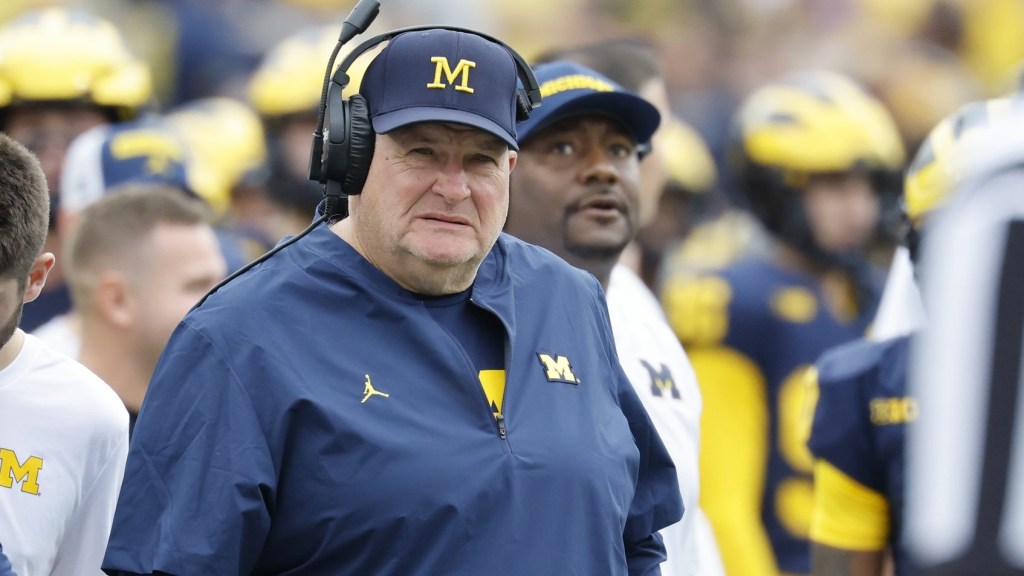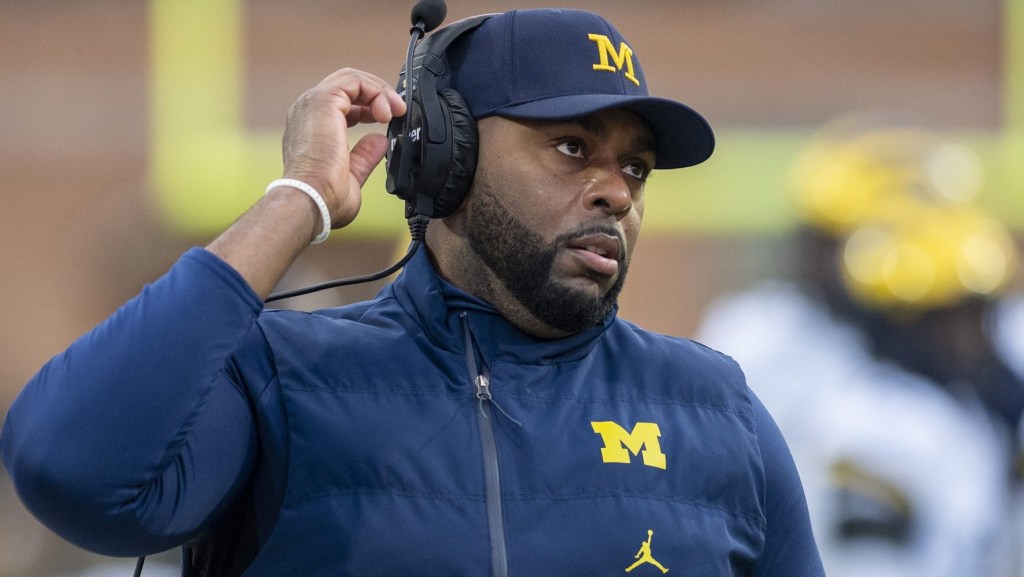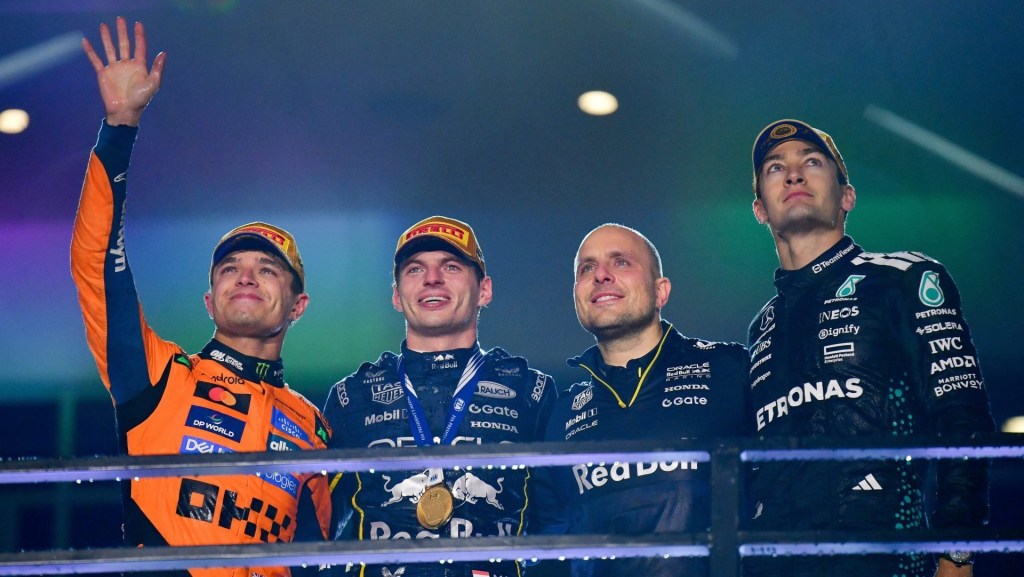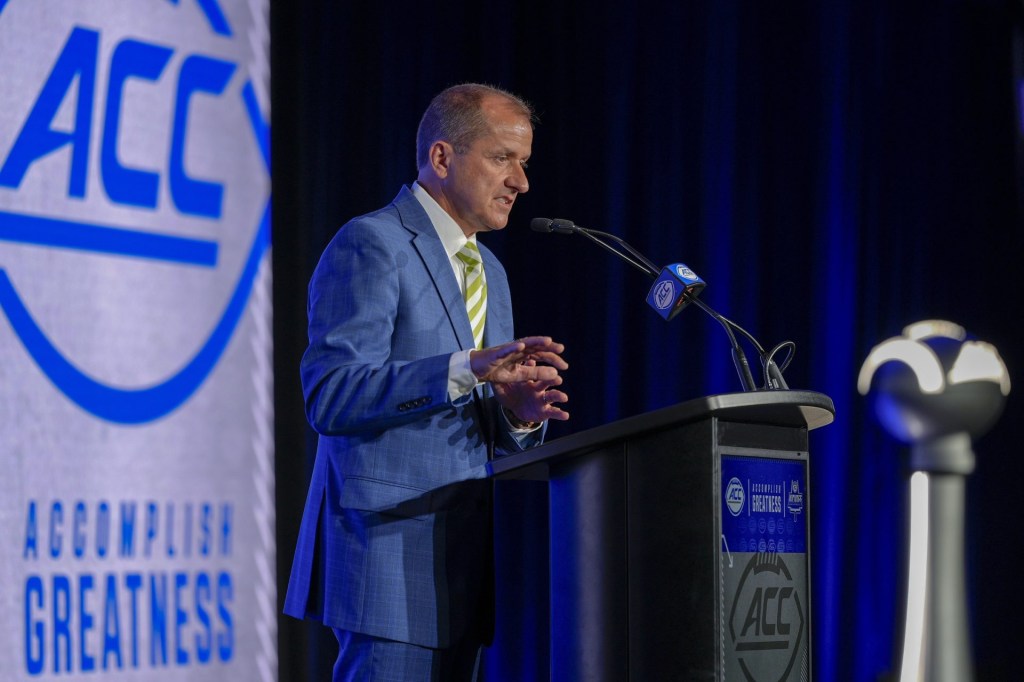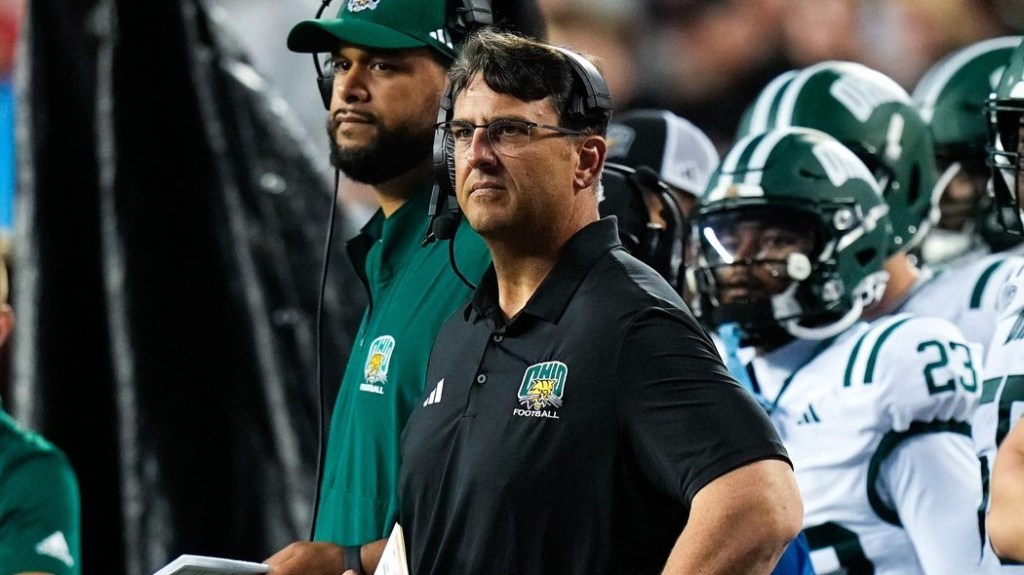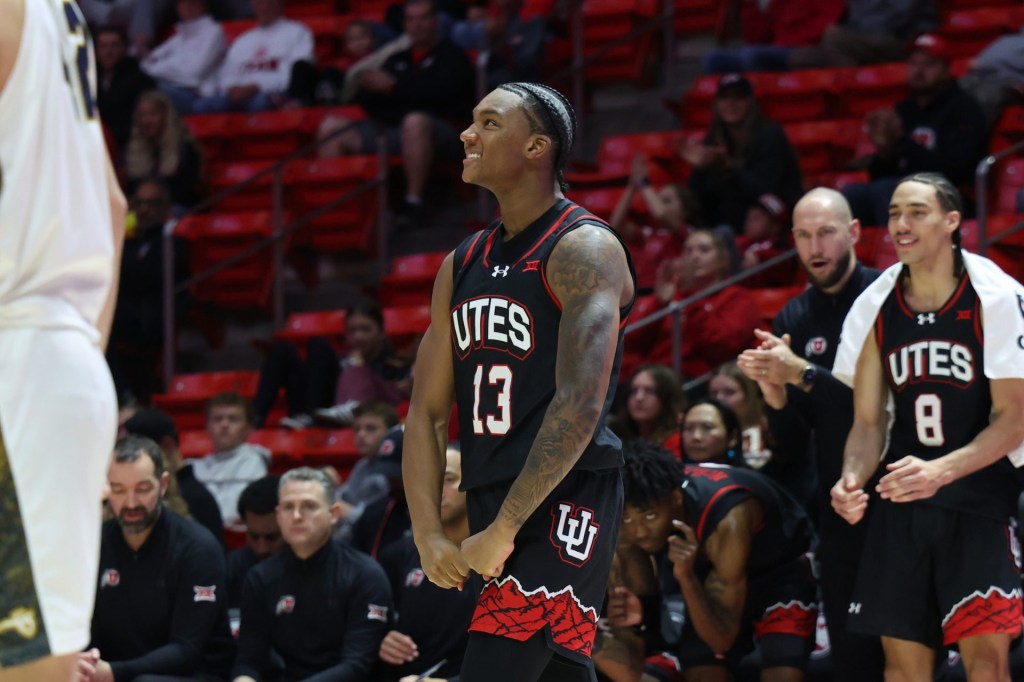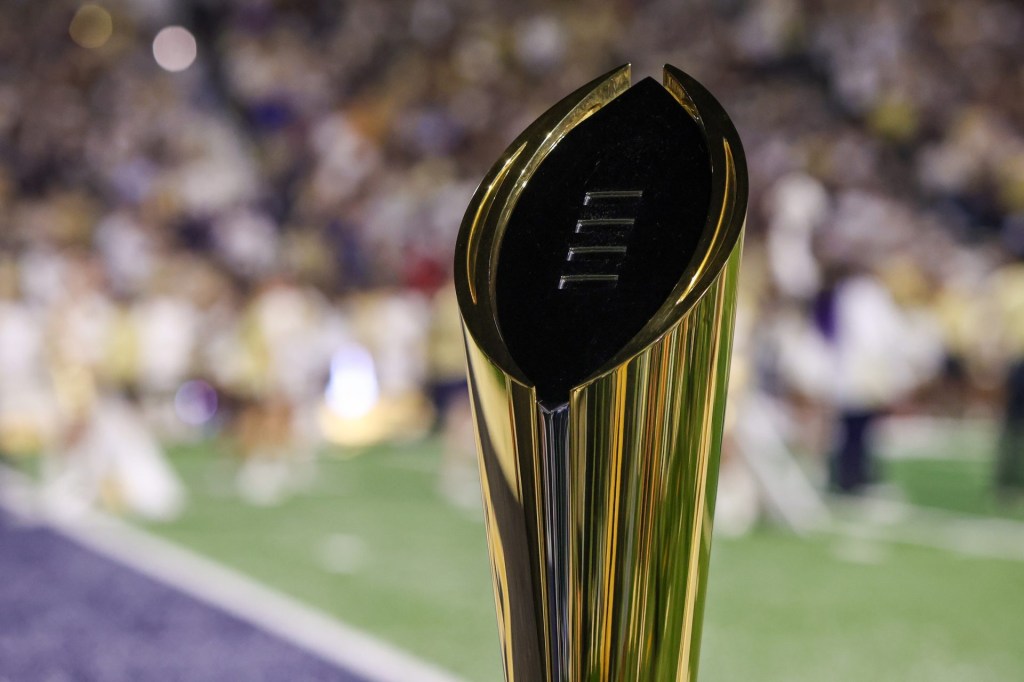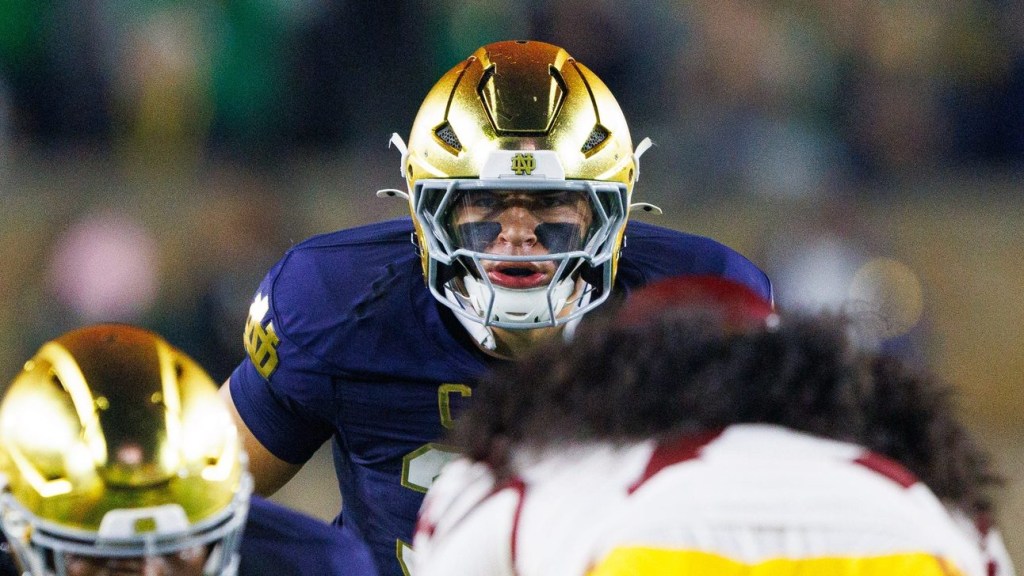Despite losing USC and UCLA, Pac-12 Commissioner George Kliavkoff said in July he thought the conference’s position was “enviable.”
The Pac-12 was next in line to negotiate a new media rights package after the Big Ten. Kliavkoff had been authorized to begin negotiations early, and said he had interest from multiple members.
But since last summer, the Pac-12’s future has been thrown into chaos.
It was usurped in negotiations by the Big 12, and is now the only Power 5 conference without a media deal post-2024. It’s been negotiating with media partners that have already filled much of their marquee college sports inventory, and are saving up for other big-time properties.
There’s little chance of the Pac-12 improving its value with expansion. Meanwhile, a current school could jump to richer pastures.
Last week, Pac-12 university presidents put out a statement saying they had engaged in “positive” conversations. “The 10 Pac-12 universities look forward to consummating successful media rights deal(s) in the very near future,” it read. The subtext: The remaining members are sticking together for now.
But the reality is that the Pac-12 is “floating around on an island,” one source told Front Office Sports.
Can it be saved?
A Once-Bright Future
In 2011, former Pac-12 Commissioner Larry Scott inked a massive deal: a 12-year, $3 billion package with Fox and ESPN for top football and basketball games. Then, he oversaw the official launch of the Pac-12 Networks, heralded for their ability to elevate olympic sports.
Scott, hired in 2010, was celebrated for his ingenuity and leadership. In all, media rights brought in about $250 million a year, among the best in all of college sports.
But Scott allowed a crucial mistake: The Pac-12 Networks did not sign with a partner as the Big Ten Network did with Fox — and therefore currently aren’t nearly as valuable as other conference networks. In recent years, the conference has been on the lower end of the Power 5 in overall conference distributions.
Then, there was June 30, 2022. USC and UCLA announced that they intended to jump to the Big Ten, and the conference lost millions in annual media rights value overnight.
Despite these factors, the Pac-12 had hope. “We are confident in the long-term value of our [media] rights,” Kliavkoff said at football media days.
But the nail in the coffin came in October, when the Big 12 leapfrogged the Pac-12, signing a deal even though its package didn’t expire until 2025. Big 12 Commissioner Brett Yormark inked an extension with ESPN and Fox for $2.28 billion.
Now, the warm-weather conference has been left out in the cold.
A Tumultuous Media Market
The Pac-12’s 10 remaining members would be lucky to receive the same amount of media rights dollars as they do from their current deal, one source predicted. Schools receive in the low-to-mid $30 million range for media rights and other distributions, per tax filings.
Losing USC and UCLA depletes the conference’s value and inventory, and completely removes the coveted Los Angeles market. No school on the market could replace them.
The economy is nowhere near as strong as when the Big Ten and Big 12 struck their deals, one source noted. Tech giants, including potential media partner Amazon, have laid off thousands. Linear networks like ESPN are conserving their dollars for upcoming properties like the NBA, NASCAR, and UFC — not to mention the expanded College Football Playoff.
Besides, they already have plenty of college football rights, especially after the Big 12 moved ahead.
CBS and Warner Bros. Discovery have bowed out of Pac-12 negotiations, according to The Action Network. ESPN and FOX will have top content from the SEC and Big Ten, respectively, as well as the future Big 12. NBC also has access to a prime Big Ten football matchup and inventory on its streaming network, Peacock. It still has an exclusive deal with Notre Dame.
There have been whispers about the ability for a streamer, like Apple or Amazon, to save the Pac-12. Kliavkoff is flirting with the idea of putting Pac-12 football — and potentially other sports — on Apple TV+, The New York Post reported on Tuesday. Amazon is still in the mix.
But even if a streamer can pay a premium, is it worth losing the reach of a linear network? “You have to be careful of trading exposure for dollars,” Big Ten Network co-founder and former FOX Sports Networks president Bob Thompson told FOS. “It’s a very difficult balance to strike.”
Even so, there’s no guarantee the conference will get extra cash from a streamer. At this point, Amazon is “playing hardball” in negotiations, Front Office Sports reported last week.
Pac-12’s Path Forward
The conference has a few opportunities to claw back.
The most important, according to one source: the expanded College Football Playoff. The new 12-team format guarantees that the conference will have at least one school in the postseason every year, guaranteeing at least some relevance.
The Pac-12 can also expect more media rights revenue — the annual payout for the next CFP contract could be worth up to $2.2 billion a year.
The CFP may help the Pac-12 from an expansion standpoint. Even if it doesn’t get a competitive media package, schools may want to stay for the chance to earn the automatic playoff spot, rather than getting pummeled in a super conference.
The conference could stick together simply because the richer conferences are no longer in the market at the moment (besides the Big 12, which has said it wants to expand west).
The Pac-12 could still benefit from adding new schools even if they can’t replace USC and UCLA’s brand value, one source noted. For example, San Diego State could give the conference a presence in Southern California — good for its media market and its recruiting hotbed.
Arizona athletic director Ray Anderson told Arizona Sports a deal could come to fruition in the next few weeks. “It may not be the projections originally contemplated, but will be a solid enough financial situation to keep this conference together,” he said.
The Pac-12, for its part, declined to comment on this story.

